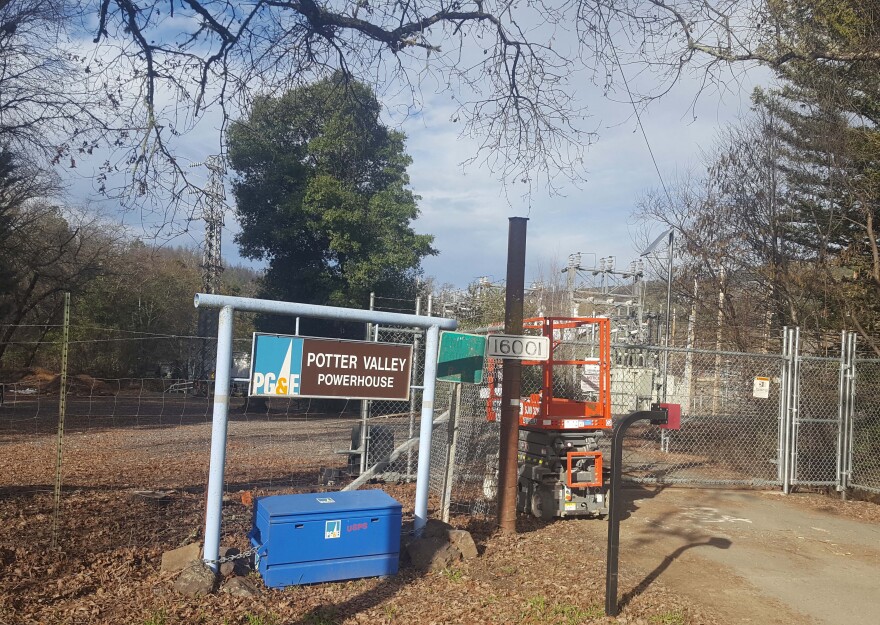February 1, 2019 — It’s been a week since PG&E announced it was not seeking to re-license the Potter Valley Project and that it was ending the effort to sell it.
The project consists of Scott Dam, which forms Lake Pillsbury in Lake County, and van Arsdale reservoir behind Cape Horn Dam, on the north end of Potter Valley. That’s where a tunnel through a mountain diverts water from the Eel River into the Russian River. The water travels through a powerhouse on the south end of Potter Valley and makes its way to Lake Mendocino at Coyote Valley Dam, which is managed by the Army Corps. Lake Mendocino is the water supply for the vast majority of the southern part of the county. It also serves the southern parts of Sonoma County.
PG&E, which owns and manages the Potter Valley Project, started the relicensing process in spring of 2017. A year later, the company announced it was going to sell the project. Last Friday, it sent out a flurry of emails saying it was abandoning the relicensing process, was not going to sell after all, and that it apologized for the inconvenience.
The Inland Water and Power Commisison (IWPC), a joint powers authority consisting of the County of Mendocino, the City of Ukiah, Russian River Flood Control and Water Conservation Improvement District, the Potter Valley Irrigation District, and the Redwood Valley Irrigation District, hopes to take control of the project, which is key to regional water management. Each of the five entities put up $20,000 to hire a consultant to help navigate PG&E’s complicated sale process. Guinness McFadden, a board member of the Potter Valley Irrigation District, described the company’s sudden withdrawal from the sale as “duplicitous.”
But conservationist groups CalTrout and Friends of the Eel River hailed the development as an opportunity to remove Scott Dam, which, unlike Cape Horn Dam, does not have a fish ladder. Removing the Lake County dam is the main component of what’s been called a two basin solution, aimed at continuing to divert water from the Eel River into the Russian during the winter months while allowing natural flows during the summer. For about a year and a half, an ad hoc committee led by Congressman Jared Huffman has been studying fish passage and water flows associated with the project.
CalTrout, a conservation group with offices in Humboldt and the Bay Area, recently released a report identifying five dams that it views are “ripe for removal,” including Scott Dam. The report highlights removal opportunities like license renewal, the status of work being conducted to that end, and partners involved in removal efforts.
In this fifteen-minute special, we’ll take a look at what that means to interests in Potter Valley, Arcata, and Sonoma County.
We’ll hear from Mendocino County First District Supervisor Carre Brown and IWPC Chair Janet Pauli, both of Potter Valley, about what Pauli views as the “extraordinary assumptions” behind the proposal to remove Scott Dam. And we’ll hear from CalTrout’s north coast director, Darren Mireau, who believes that removing the dam will restore salmon runs in the Eel while continuing to provide water to interests on the Russian River side of the project.
We’ll also take a look at a civil engineering report, which the Sonoma County Water Agency commissioned in July of 2018, a few months after PG&E declared its intention to sell the project. It’s a feasibility study of “potential alternatives for capital modifications of the Potter Valley Project,” including scenarios that range from full removal to partial decommission of one or both dams, with and without sediment management. Sediment buildup in the van Arsdale reservoir has long been cited as one of the reasons Scott Dam was built in the first place.
The order to decommission would have to come from FERC, the Federal Energy and Regulatory Commisison. That order has not been made at this time.
The civil engineering document, titled "Potter Valley Project Capital Modificaitons Feasibility Study Report," says that with the full removal of Scott Dam and the partial decommission of Cape Horn Dam, a new river channel would have to be dug through the Lake Pillsbury area, which, without the dam, would no longer serve as a reservoir. Some of the material would be disposed of in the river overbank areas. Extensive erosion control measures, including structural engineering and vegetation management, would also come into play. The cost of this scenario is estimated at $71.5 million. Partial decommission of Scott Dam, which would involve spillway modifications, is estimated at $32.5 million.
The estimate for the most expensive option, which is full decommissioning of both dams with sediment removal, is over $164 million. The report acknowledges that sediment management is a major concern in dam removal operations, and that the accuracy of cost estimates ranges from twenty per cent lower to fifty per cent higher than initial projections.
That brings us back to the money that belongs to everyone in the county, regardless of where they get their water. Remember, the County of Mendocino is part of the IWPC, which has invested in efforts to purchase the project.
We’ll close by hearing about how the IWPC plans to adapt to quickly changing conditions in a negotiation that is vital to all the living things (on both rivers) that rely on water to sustain themselves.


